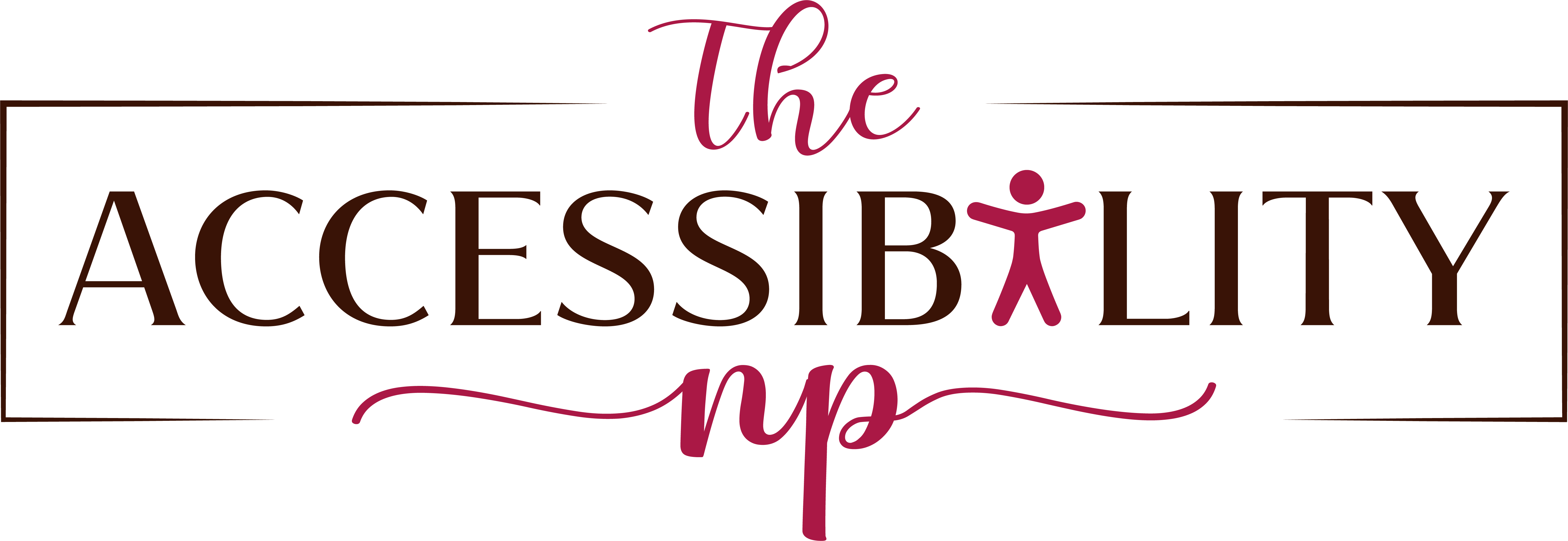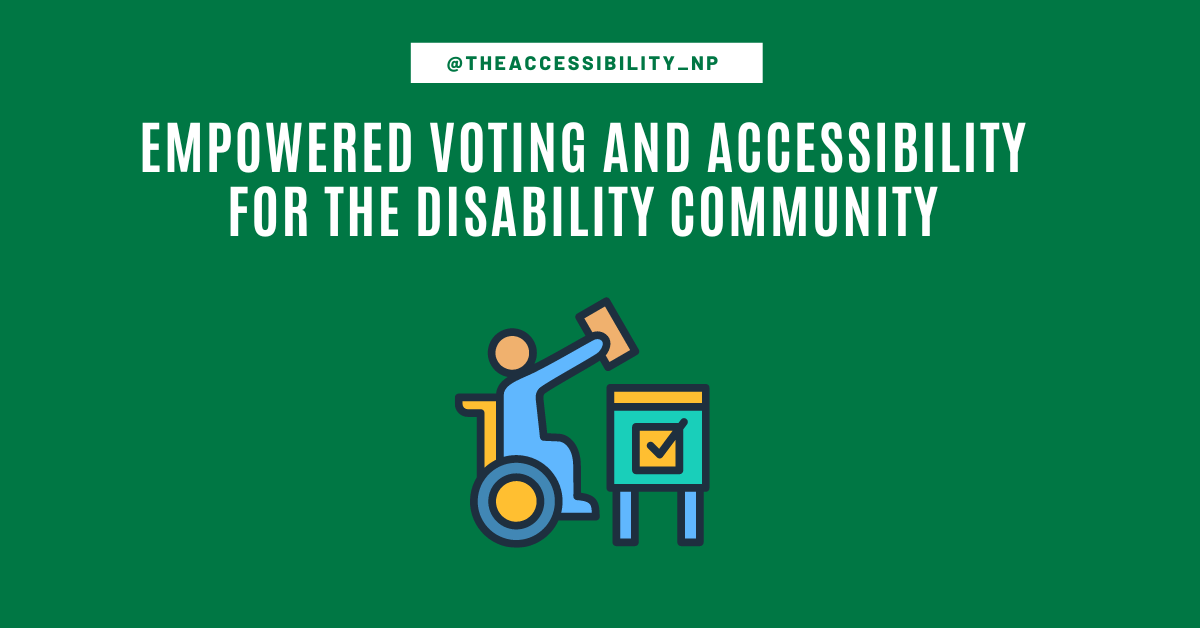As the presidential election draws near, conversations around civic engagement are more important than ever. Voting is a fundamental right that allows individuals to shape the future of their communities and the country. However, for disabled individuals, voting can be a complicated and often inaccessible process. Despite recent progress, many barriers remain that prevent full participation from the disability community. As an accessibility consultant and advocate, it’s vital to shed light on why voting is crucial for disabled individuals and how accessible voting options can help ensure their voices are heard.
The Importance of Voting in the Disability Community
Voting is not just about participating in elections—it’s about having a say in the policies that directly impact everyday lives. For disabled individuals, the stakes are high. Many rely on public services, healthcare programs, and educational supports that are governed by laws and policies set by elected officials. Programs such as Medicaid, Social Security, the Americans with Disabilities Act (ADA), and the Individuals with Disabilities Education Act (IDEA) all play a significant role in the lives of disabled individuals, making their participation in elections essential.
In the United States, over 38 million disabled people are eligible to vote, according to research by the Rutgers Program for Disability Research. However, voter turnout within the community is consistently lower than the general population. Barriers to voting, such as inaccessible polling places, lack of accessible voting materials, and limited outreach, all contribute to this disparity. Despite these challenges, the disability community has the power to make a significant difference in elections, advocating for inclusive policies and disability rights through the electoral process.
When disabled individuals vote, they ensure that their voices are represented in decisions that affect everything from healthcare access to inclusive education and employment opportunities. Every vote from a disabled individual is a statement of advocacy for equity, inclusion, and the protection of critical programs that support independent living and community participation.
Breaking Down Barriers: Understanding Accessible Voting Options
While many barriers to voting remain, progress has been made to ensure elections are more accessible. Here are some key accessible voting options available to disabled individuals:
- Polling Place Accessibility
Polling places are required to be physically accessible, meaning they must have ramps, wide doorways, accessible parking, and clear signage. If your polling location is not accessible, you have the right to request accommodations. Additionally, most polling places offer accessible voting machines for individuals with mobility challenges or visual impairments.
- Accessible Voting Machines
Under the Help America Vote Act (HAVA), every polling place must have at least one accessible voting machine. These machines accommodate a range of disabilities, offering audio instructions, braille keypads, and tactile input devices for voters with visual impairments. Additionally, individuals with mobility impairments or fine motor difficulties can use assistive devices such as sip-and-puff systems to cast their vote independently.
- Curbside Voting
Curbside voting allows individuals who cannot physically enter a polling place to vote from their car. A poll worker will bring the necessary voting materials to the vehicle, allowing the individual to vote without leaving their car. This option is ideal for those with mobility impairments, sensory sensitivities, or other health-related issues that make entering a polling place difficult.
- Mail-In and Absentee Voting
Voting by mail or absentee ballot is an excellent option for those who cannot easily visit a polling place. Most states allow individuals to request a mail-in ballot, which can be completed from the comfort of their home. For disabled individuals, this option provides the flexibility to vote without needing to navigate inaccessible polling places or arrange transportation. Many states also offer accessible formats for mail-in ballots, such as large print or braille.
- Assistance with Voting
If a disabled individual needs assistance casting their vote, they are legally allowed to have someone of their choice help them. The person providing assistance cannot be the voter’s employer or union representative, but they can read the ballot, mark the ballot, or assist with operating the voting machine. This ensures that individuals who need help due to physical or cognitive disabilities can still participate in the voting process while maintaining their privacy and autonomy.
- Accessible Voting Materials
Beyond accessible voting methods, election materials must be available in formats that meet the needs of disabled voters. This includes large print ballots, braille, audio formats, and screen-reader-friendly websites for voter information. Ensuring that materials are accessible means disabled individuals can make informed decisions just like any other voter.
- Provisional Ballots
If there is a concern about your eligibility to vote, you may cast a provisional ballot. This option allows you to vote even if there are questions about your registration or identification. After Election Day, election officials will verify your eligibility and count the vote if everything is in order. Provisional ballots are a safety net to ensure that no one is turned away from voting.
How to Advocate for Accessible Voting
Voting accessibility has improved, but there is still work to be done. Advocacy plays a critical role in ensuring that future elections are inclusive and accessible for everyone. Here are ways you can advocate for accessible voting:
- Report Issues Immediately: If you encounter accessibility issues at your polling place, notify a poll worker or election official immediately. You can also report issues to the Election Protection Hotline or file a formal complaint with your state’s election office.
- Request Accommodations in Advance: If you require specific accommodations like curbside voting or accessible voting machines, contact your local election office ahead of time to make sure the resources will be available on Election Day.
- Use Your Voice: Don’t let obstacles discourage you from voting. Share your experiences with advocacy groups or social media to raise awareness about accessibility issues. Your voice can help ensure that future elections are more inclusive.
- Support Accessible Voting Legislation: Stay informed about local and national legislation that impacts accessible voting. Laws like the ADA, HAVA, and state-specific rules are essential to ensure fair access to voting for all. Advocate for stronger protections and inclusive voting practices to improve future elections.
Additional Resources for Accessible Voting and Voter Registration
To make sure your voting experience is as smooth and accessible as possible, here are some valuable resources:
- Election Protection Hotline: Visit the Election Protection website for help with voting issues or to report accessibility barriers at your polling place.
- Accessible Voting Information: Learn more about accessible voting options and your rights as a voter on the U.S. Election Assistance Commission’s Accessible Voting page.
- ADA Voting Rights: Find detailed information about voting rights for disabled individuals on the ADA National Network’s Voting Accessibility page.
- Check Your Voter Registration: Make sure you’re ready to vote by checking your voter registration status. You can easily confirm your registration on the USA.gov Voter Registration page.
Empowering the Disability Community Through Voting
Accessible voting is more than just casting a ballot—it’s about ensuring that disabled individuals have the opportunity to actively participate in shaping their communities and advocating for their rights. Voting allows the disability community to influence decisions that impact vital areas such as healthcare, education, employment, and public policy. It is a powerful tool for driving change, ensuring that the voices of disabled individuals are heard and their needs represented.
In every election, from local races to the presidential election, the disability community can have a profound impact. By understanding your voting rights, exploring accessible voting options, and using your voice, you are not just participating in the electoral process—you are shaping a more inclusive and accessible world for all. The decisions made by elected officials directly influence the quality of life for millions of disabled individuals, making it crucial for the community to be fully engaged in the voting process.
As we approach this election, it’s essential to break down barriers and encourage everyone in the disability community to exercise their right to vote. Whether you vote by mail, in person, or with assistance, your voice matters, and it deserves to be heard.
This blog complements my ongoing Instagram series on empowered accessible voting. Head over to my Instagram page for more resources and insights as we work toward a future where every vote counts, every barrier is removed, and every disabled individual is empowered to shape their future.
Inspiring Change | Making Accessibility Happen | Advocate for Empowered Voting

